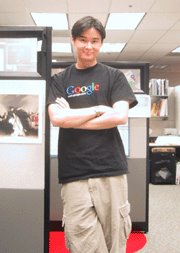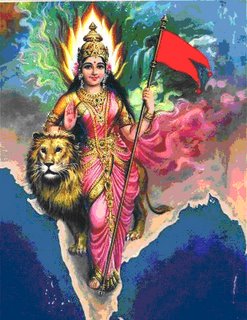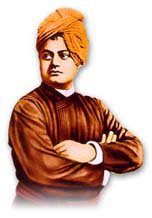Indian Police
Posted by kiraN at 1/24/2006 11:13:00 am 0 comments
All the police organizations in the world are called to meet at a common place to evaluate the best organization. Only major organizations like the New York Police, the Melbourne Police, Scotland Yard, the Dutch Police and the Mumbai Police pass the eliminations round.
Now the task is to select the best one among them. Surprisingly, all the 5 groups do equally well in all the events so the judges put in a last (tiebreak) event to select the best team. They set a tiger free into a nearby forest and the team that catches the tiger in the least amount of time is to be declared the winner.
First the Dutch Police go into the jungle and catch the tiger in 30minutes.
Next the Melbourne Police go and return in 20 min. with the tiger.
After this the
Next Scotland Yard detectives go in and catch the tiger in a mere 10 min.
The Mumbai Police have the the last slot. The tiger is released and the Mumbai Police start chasing it.
10min go by.......20 min go by......30 min go by....1 hour passes by....3 hours pass by. The judges get vexed and decide to go into the jungle in search of the Mumbai Police. In a short time after getting into the jungle, they are amazed to find a big BEAR tied to a tree trunk, being beaten left and right by the Mumbai Police, who are shouting,
"BOL TU SHER HAI .......... SALA BOL ! TU HI SHER HAI !!"
Swami Vivkenanada's Words - 2
Posted by kiraN at 1/23/2006 01:47:00 pm 0 commentsArise, awake, for your country needs this tremendous sacrifice, It is the young men that will do it, 'The young, the energetic, the strong, the well-built, the intellectual' - for them is the task. - Swami Vivekananda |
Birth and Early life
Narendranath Dutta(Swami Vivekananda) was born in Shimla Pally, Kolkata, West Bengal, India on 12 January 1863 as the son of Viswanath Dutta and Bhuvaneswari Devi. Even as he was young, he showed a precocious mind and keen memory. He practiced meditation from a very early age. While at school, he was good at studies, as well as games of various kinds. He organised an amateur theatrical company and a gymnasium and took lessons in fencing, wrestling, rowing and other sports. He also studied instrumental and vocal music. He was a leader among his group of friends. Even when he was young, he questioned the validity of superstitious customs and discrimination based on caste and religion.
In 1879, Narendra entered the Presidency College, Calcutta for higher studies. After one year, he joined the Scottish Church College, Calcutta and studied philosophy. During the course, he studied western logic, western philosophy and history of European nations.
There started to arise questions about God and the presence of God in young Narendra's mind. This made him associate with the Brahmo Samaj, an important religious movement of the time, led by Keshab Chandra Sen. But the Samaj's congregational prayers and devotional songs could not satisfy Narendra's zeal to realise God. He would ask leaders of Brahma Samaj whether they have seen God. He never got a satisfying answer. It was during this time that Professor Hastie of Scottish Church College told him about Sri Ramakrishna of Dakshineswar.
Source: Wikipedia - Swami Vivekananda
WHO you have in your life?
Posted by kiraN at 1/23/2006 12:13:00 pm 1 comments A story tells that two friends were walking through the desert. During somepoint of the journey they had an argument, and one friend slapped the other one in the face.
A story tells that two friends were walking through the desert. During somepoint of the journey they had an argument, and one friend slapped the other one in the face.The one who got slapped was hurt, but without saying anything, wrote in the sand: TODAY MY BEST FRIEND SLAPPED ME ON FACE.
They kept on walking until they found an oasis, where they decided to take a bath. The one who had been slapped got stuck in the mire and started drowning, but the friend saved him. After he recovered from the neardrowning, he wrote on a stone: TODAY MY BEST FRIEND SAVED MY LIFE.
The friend who had slapped and saved his best friend asked him, "After I hurt you, you wrote in the sand and now, you write on a stone,why?" The other friend replied "When someone hurts us we should write it down in sand where winds of forgiveness can erase it away. But, when someone does something good for us, we must engraveit in stone where no wind can ever erase it."LEARN TO WRITE YOUR HURTS IN THE SAND AND TO CARVE YOUR BENEFITS IN STONE.

They say
it takes a minute to find a special person,
an hour to appreciate them,
a day to love them,
but then an entire life to forget them.
Do not value the THINGS you have in your life..
But! Value WHO you have in your life!
~~ From: Murali ~~
Swami Vivkenanada's Words
Posted by kiraN at 1/19/2006 05:15:00 pm 4 commentsDo not be frightened. Awake, be up and doing.Do not stop till you have reached the goal.
|
Swami Vivekananda (Bangla: স্বামী বিবেকানন্দ, Hindi: स्वामी विवेकानन्द) (whose pre-monastic name was Narendranath Dutta Bangla: নরেন্দ্রনাথ দত্ত, Hindi: नरेन्द्रनाथ दत्त) (January 12, 1863 - July 4, 1902) is considered one of the most famous and influential spiritual leaders of the Vedanta philosophy. He was the chief disciple of Ramakrishna Paramahamsa and was the founder of Ramakrishna Math and Ramakrishna Mission. He is considered by many as an icon for his fearless courage, his positive exhortations to the youth, his broad outlook to social problems, and countless lectures and discourses on Vedanta philosophy.
Source: Wikipedia - Swami Vivekananda
Artist of the Google Logos
Posted by kiraN at 1/18/2006 11:20:00 am 2 comments More than 150 million Web surfers around the globe celebrated Korean Independence Day Aug. 15, 2001. Well, at least for a few moments while they were visiting the popular Internet search engine Google. That day, the Korean national flag and several roses of Sharon, the Korean national flower, adorned the familiar "Google" logo on the homepage of the Web site.
More than 150 million Web surfers around the globe celebrated Korean Independence Day Aug. 15, 2001. Well, at least for a few moments while they were visiting the popular Internet search engine Google. That day, the Korean national flag and several roses of Sharon, the Korean national flower, adorned the familiar "Google" logo on the homepage of the Web site.Just another day's work for Dennis Hwang (Hwang Jung-moak), a 23-year-old Korean computer artist in the United States , who has been drawing the face of Google for almost two years, creating a buzz of sorts with his simple yet witty designs.
With its seemingly magical ability to produce the most relevant search results, Google is already an established destination for the Internet savvy. Recently, Hwang's creative logos have been expressing the playful heart of Google behind the impressive technology.
For Piet Mondrian's birthday, Hwang transformed the "Google" logo to emulate the artist's signature style of utilizing colorful blocks. Claude Monet's birthday saw the logo turned into a dreamy watercolor, complete with floating lily pads.
Hwang recently spoke with The Korea Herald to give his take on the artistic side of the popular Internet search engine.
The Korea Herald: How long did you live in Korea as a child? What was it like?
Dennis Hwang: I was born in Knoxville, Tenn., but moved to Korea when I was about five years old. My hometown was Gwacheon where I had a very normal childhood. I went through public schools like everyone else, spending six years at Gwacheon Elementary School and two years at Munwon Middle School. Actually, much of my ideas and style stem from the time I spent during my childhood in Korea. Whatever challenges the logos bring, I can often rely on the little doodles that I used to do in school when I was young. Something that used to be frowned upon turned out to be my greatest asset.
Herald: When did you move back to the United States?
Hwang: I came back in 1992 when my father received a Fulbright Scholarship to research in the United States.
Herald: What was it like going to an American school all of a sudden?
Hwang: I was placed in a public middle school but was completely unprepared for it. I didn't speak a word of English. For the first six months, I couldn't communicate with the teachers or students. With the help of ESL programs though, I got better. My father returned to Korea, but my brother and I decided to continue our education in the States. My parents have made unimaginable sacrifices for us over the last 10 years, and I wouldn't be this successful without their support.
Herald: What was the first logo you designed for Google?
Hwang: Google had been using outside contractors to do the earlier logos, so the first project I got was modifying the Fourth of July logo in 2000. The two founders, Larry Page and Sergey Brin, wanted something more fun, so I redrew parts of the image. The next logo was for Bastille Day, which is the first logo I did from scratch.
Herald: Which letters are your favorite targets for manipulation?
Hwang: Understandably, the "O" and the "L" are the easiest to deal with. The "O" has become a Halloween pumpkin, a Nobel Prize medal, the Korean flag symbol and the planet earth. The "L" has been used as a flagpole, the Olympic flame cauldron or a snow ski. The first "G" is the most difficult to deal with, and I don't think the "E" has gotten much action because of its location.
Herald: How did you come to do the Korean Independence Day logo?
Hwang: Google makes a big effort to recognize holidays that aren't necessarily mainstream. The Korean Independence Day logo was seen globally by tens of millions of people. Numerous Korean-Americans wrote to thank us on Aug. 15 last year. Many expressed how proud it made them to see the Korean flag.
Herald: Do you have plans for other Korea-related logos in the future?
Hwang: I'll definitely to a special logo for Korea hosting the World Cup.
Herald: You're only 23 years old. What are your future plans?
Hwang: Who knows? It's very important to me that I can work both technically and artistically. Google is a perfect place to do that. It allows me to have a programming job while letting me express myself artistically, with the added bonus of having my work be seen by tens of millions of people in a single day.
Herald: What is your favorite letter among the ones found in the word "Google?"
Hwang: I've stared at the logo for so long and so often. I love them all equally.
Balle..balle..
Posted by kiraN at 1/09/2006 08:30:00 pm 5 comments
A sardarji goes for a job interview in an office.
The interviewer starts with the basics. "So, Mr., can you tell us your age,please?"
The sardarji counts carefully on his fingers for half a minute before replying. "Um ... 22."
The interviewer tries another straightforward one to break the ice. "Andcan you tell us your height, please?"
sardarji stands up and produces a measuring tape from his handbag..he then traps one end under his foot and extends the tape to the top of hishead. he checks the measurement and announces, "Five foot two!"
This isn't looking good so the interviewer goes for the real basics;
something the he won't have to count, measure, or lookup. "Just to confirmfor our records, your name please?"
The sardarji bobs his head from side to side for about fifteen seconds,
mouthing something silently to himself, before replying, "Gurpreet!" .
The interviewer is completely baffled at this stage, so he asks, "What wereyou doing when I asked you your name?"
"Oh, that!" replies the sardarji," I was just running through that song,
'Happy birthday to you, happy birthday to you...Happy Birthday dear Gurpreet...happy birthday to you...'."
Optimism, Hope and Motivation
Posted by kiraN at 1/07/2006 04:04:00 pm 6 commentsOptimism, Hope and Motivation
Posted by kiraN at 1/03/2006 04:44:00 pm 2 commentsA winner is not one who never fails, but one who NEVER QUITS
~*~



